Between 1995 and 2007, I did extensive work throughout the P. R. of China. Coming from what I describe as “a cultural minority” myself, I guess it is only natural that I have shown particular interest in what the Chinese authorities define as “The National Minorities”, fifty-six of which are officially recognised.
Many of these minorities live on China’s borders, or in other isolated areas that were then still ‘closed’ to foreigners. Yet even in these isolated areas, the effects of the rapid social, economic and cultural transformation sweeping through the People’s Republic were apparent, although frequently, quite distinct.
Nobody really knows the exact population of the P. R. of China today; a rough estimate is 1.4 billion. Of these individuals only about 7% (under 100 million) are officially considerd to be from a “minority”. Some minority groups have already been almost totally assimulated by the majority Han Chinese. However, others (most notably the Tibetans and Uighurs) defiantly attempt some form of resistance to this process. It would appear to be a loosing battle – simply a question of time and numbers. Some areas in western China, the traditional homelands of many minorities, saw their populations double due to the massive influx of Han Chinese during the period I worked on this project. Central government has actively assisted this phenomenon by awarding awarding economic incentives to those Han who want to “move west” and by developing infrastructure. Meanwhile, many minorities continue to struggle in their attempt to preserve and develop some form of diverse identity.
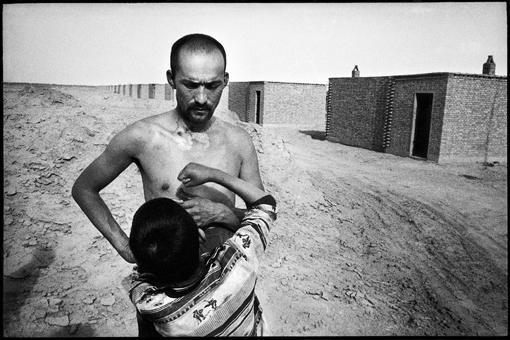
MiC-001
Uighur Father and Son
Uighur Father and son in the “Chulan” (Cherry) resettlement community. The government hope to move 30,000 “volunteers” to the site that is part of a desert reclamation scheme in southern Xinjiang. The only water supply has its source at a distance of over 600km and passes through several similar communities (which also use it for domestic consumption, irrigation and sewerage) before arriving to “Chulan”. There are also many military camps in this area, which remains closed to all those without permits.
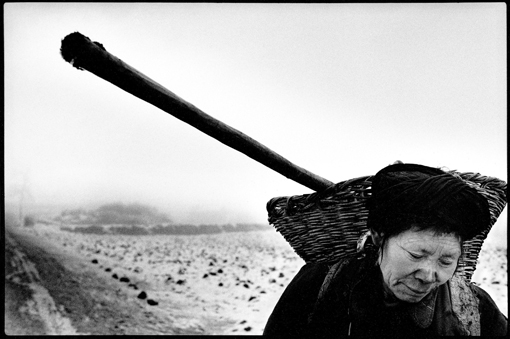
MiC-002
Miao Peasant
Miao peasant in Eastern Guizhou Province which remains one of the poorest and most backward in China today (one third of the population live below the national poverty line, 70% are illiterate and 50% of the villages are not accessible by road). Much to the frustration of local authorities the Miao remain largely self-sufficient and show little interest in assimilation with the Han through discarding their cultural identity.
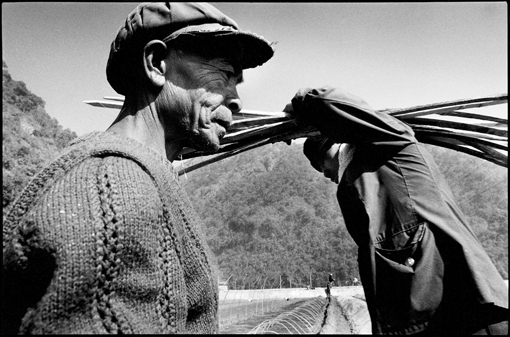
MiC-003
Wa Peasants
Wa peasants planting rice near the border with Myanmar in Western Yunnan. The Wa live on both sides of the border and were still largely a semi-nomadic people until 1949.
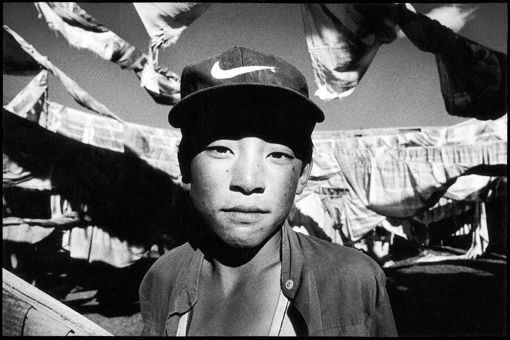
MiC-004
Amdo Youth
Amdo youth with a homemade Nike cap in front of traditional prayer flags. Qinghai Province.
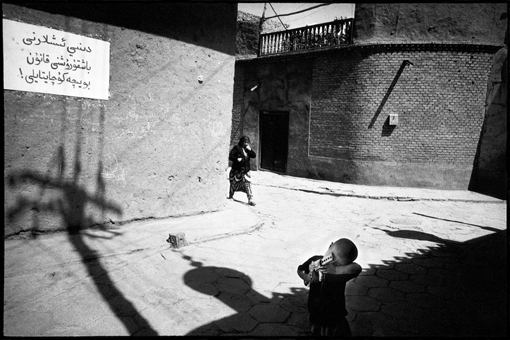
MiC-005
Uighur Boy, Kashi
Uighur boy in the back streets of Kashi, South West Xinjiang. The Uighur, a people of Turkic descent, are one of the largest of the 56 “National Minorities” officially recognised in the P.R. of China today. Kashi was declared the capital of the independent Turkestan Republic formed in 1945, however by 1951 all serious organized armed resistance to Chinese authority in the area had been defeated.
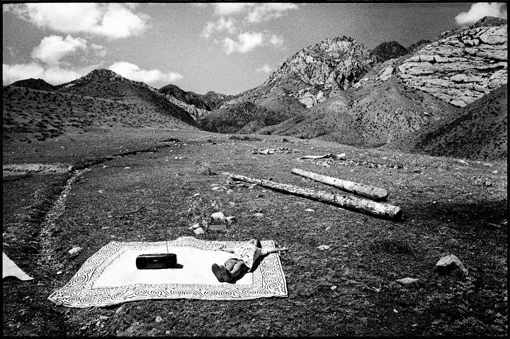
MiC-006
Mongol Boy
Mongol boy listens to a ghetto blaster on the border with Kazakhstan in North West Xinjiang. The Mongol people are to be found in all the northern Provinces of China.
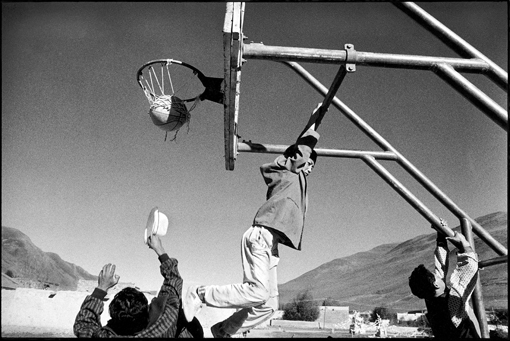
MiC-007
Amdo Basketball
Amdo youth playing basketball in Central Qinghai. The Amdo are a Tibetan people who, unlike the Kampa, are traditionally cultivators and therefore not nomadic.
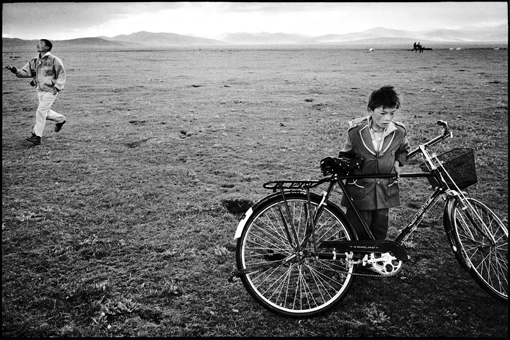
MiC-008
Kampa Youth
Kampa youth with his new bike on the plains of central Qinghai.
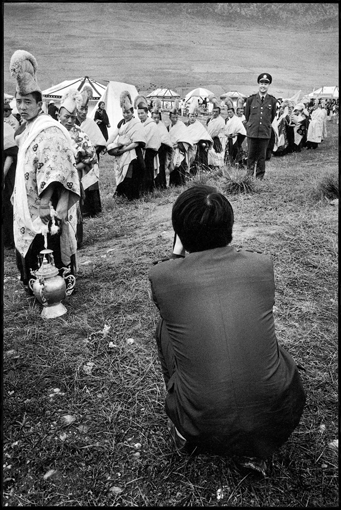
MiC-009
Han Military Photos
Han military pose for photos in front of Tibetan monks during the “Yushu Horse Festival” which, unlike other local festivals, is officially sponsored by the authorities in order to attract mainly Han tourists. Southern Qinghai Province.
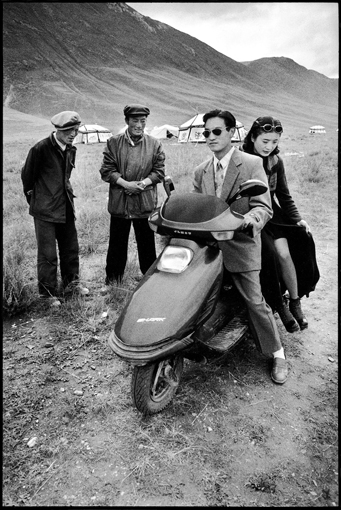
MiC-010
Moped Couple
Han Chinese couple visiting the “Yushu Horse Festival”. Qinghai is currently experiencing a massive influx of Han Chinese, mainly from central provinces, who are encouraged to move by the authorities with financial incentives, effectively colonizing the area which until recently had a majority of non Han inhabitants.
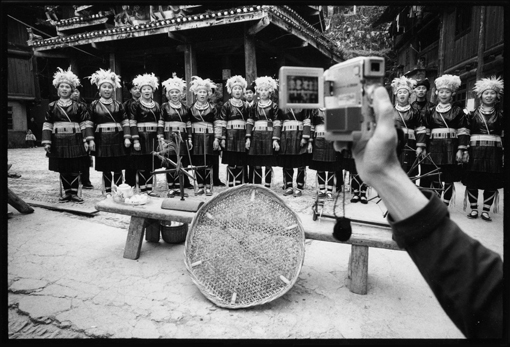
MiC-011
Dong Theatre Group
"Dong" theatre group perform for Japanese tourists. Guizhou Province.
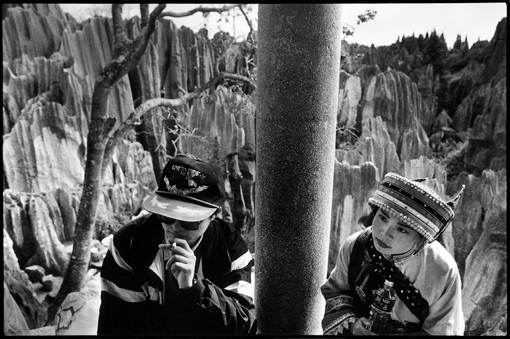
MiC-012
Yi Tourist Guide
A Yi guide in national costume with a Chinese tourist in the Stone Forest. Yunnan Province.
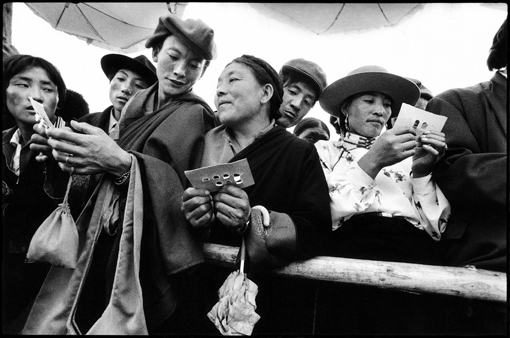
MiC-013
Tibetan Bingo
Tibetans playing bingo at the Yushu Horse Festival. Qinghai.
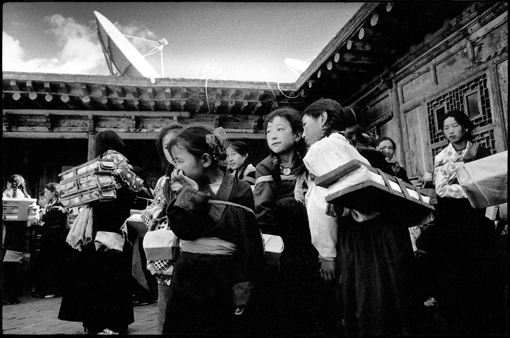
MiC-014
Satellite Sutra
Amdo girls with Sutra (Buddhist religious texts) that are taken in procession during a harvest festival. Gansu Province.
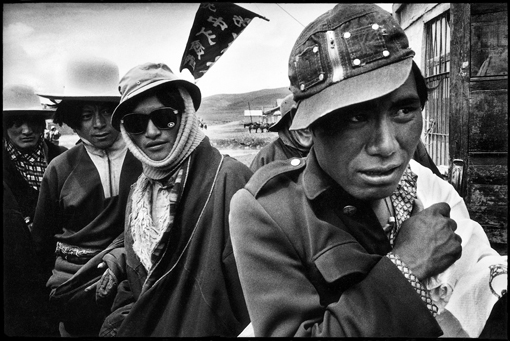
MiC-015
Kampa in Huei settlement
Kampa youth in a Huei settlement to buy provisions in Central Qinghai. The Kampa are a Tibetan people and many still live the traditional nomadic lifestyle that is dependant on the breeding of livestock (yak, horses and sheep). The Huei are Chinese Muslims, often traders or restaurateurs, they are found throughout China.
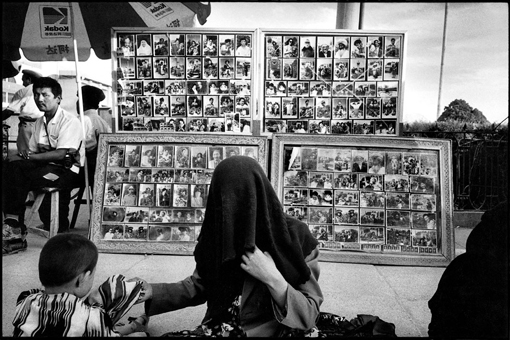
MiC-016
Uighur "Burqa" Kashgar
A Uighur woman street vendor wearing the local version of the “burqa” and a local photographer in Kashgar, Xinjiang.
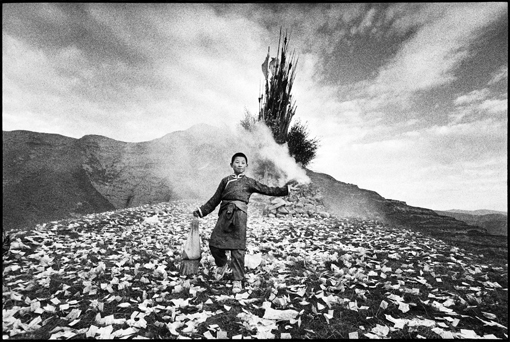
MiC-017
Prayer Papers
Amdo harvest festival. The prayer papers on the ground are thrown into the air as offerings to the Mountain Spirits. Gansu Province. The festival still has elements of the ancient Bon religion, an animistic faith which was common to the area before the arrival of Buddhism in the 3rd Century AD.
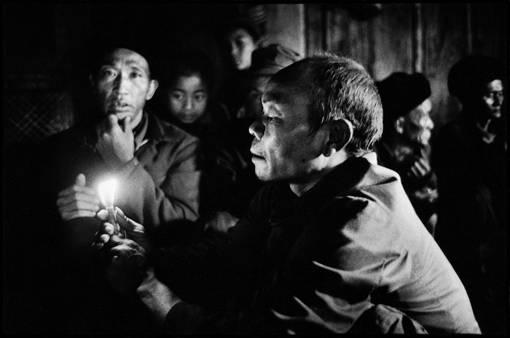
MiC-018
Wa New Year
Wa New Year ritual in South Western Yunnan Province.
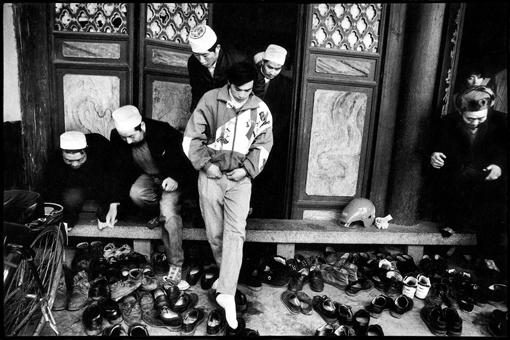
MiC-019
Friday Prayers
Huei Muslims leave the mosque after Friday prayers in North Western Guizhou Province. The Huei are practically Han Chinese (originally Arab traders on the silk routes after centuries of inter marriage they are often ethnically integrated and are to be found throughout China) but are considered a “Minority Nationality” by the authorities, as they are Muslims and have adopted a “foreign” religion.
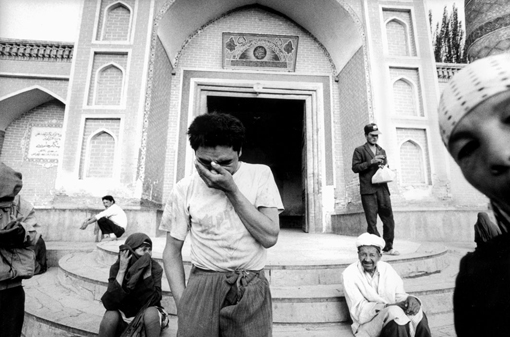
MiC-020
Mosque Beggars
Beggars outside the main mosque in Kashgar, Xingjiang.
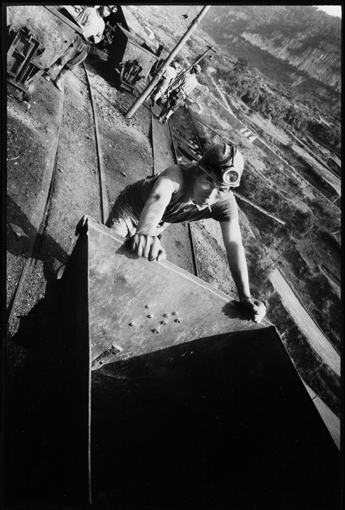
MiC-021
"Miao" Coalminer
"Miao" coalminer. Central Guizhou Province.
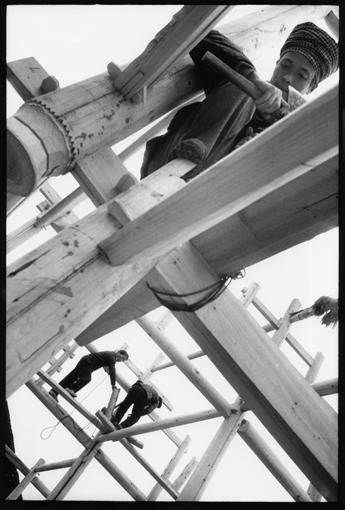
MiC-022
Dong carpenters
"Dong" carpenters working on a house being built in the traditional way. Guizhou Province.
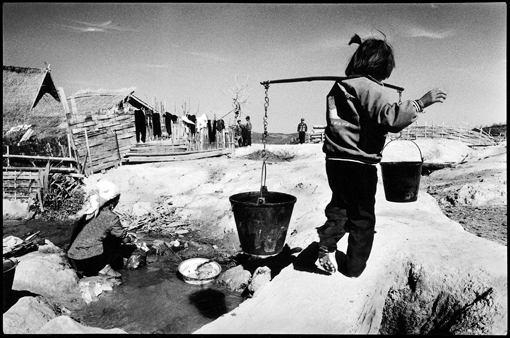
MiC-023
Wa Village
Fetching water in a Wa village. Yunnan Province.
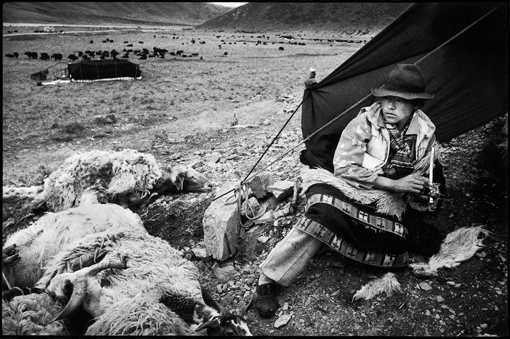
MiC-024
Kampa Shepard
Kampa Shepard takes a break from shearing sheep in South East Gansu Province.
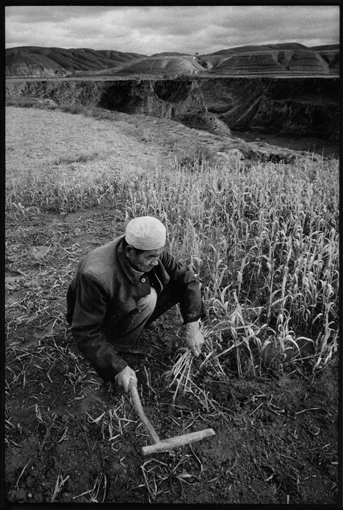
MiC-025
Jinuo Woman
A Huei farmer gathers his meagre crop in central Ningxia Province. The northern Ningxia Province has always been one of the poorest in China and is the home to approx. 6 million Huei.
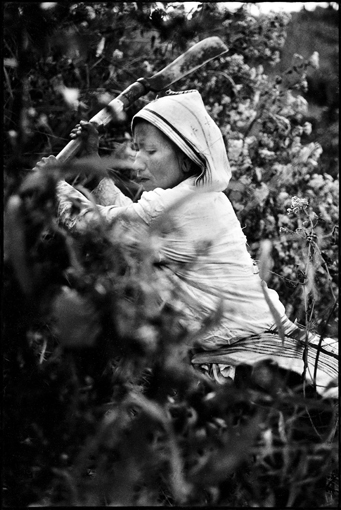
MiC-026
Jinuo Woman
Jinuo woman clearing land before planting. The Jinuo are one of the smallest of the 56 “Minority Nationalities” officially recognized in PR of China. The total population of the Jinuo is a little over 15000 and they were largely slash and burn semi- nomadic farmers until the 1950ies and 1960ies. Xishuangbanna Region, Yunnan Province.
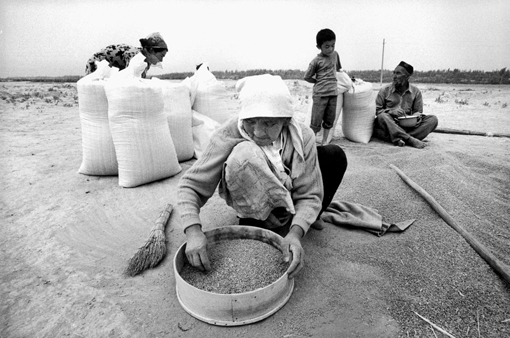
MiC-027
Harvest in Kelpin
Harvest in Kelpin, Western Xinjiang. Kelpin is an area closed to foreigners which is being "depopulated" by the authorities who consider the local Uighers too rebellious and too close to the Kyrgyzstan border.
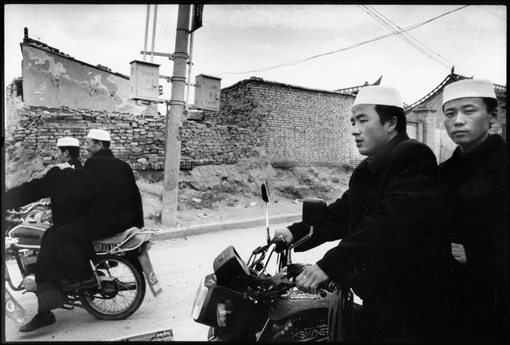
MiC-028
Huei Religious Students
Huei religious students visit homes in central Ningxia Province. The northern Ningxia Province has always been one of the poorest in China and is the home to approx. 6 million Huei.
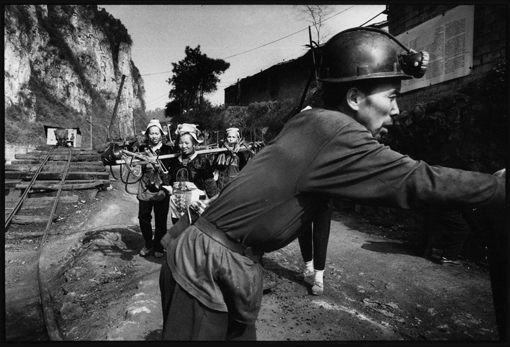
MiC-029
Miao Coalminer
Coalminer in a Miao village in Central Guizhou Province.
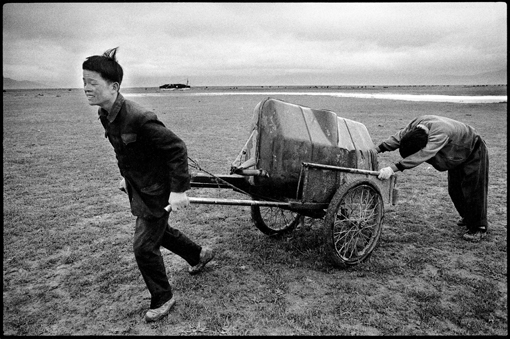
MiC-030
Huei Road Workers
Huei road construction workers fetching water in central Qinghai Province. Road and rail construction workers are often farmers who don't earn enough from their land to support their families and therefore work up to six months of the year in dire conditions for as little as 1US$ per day.
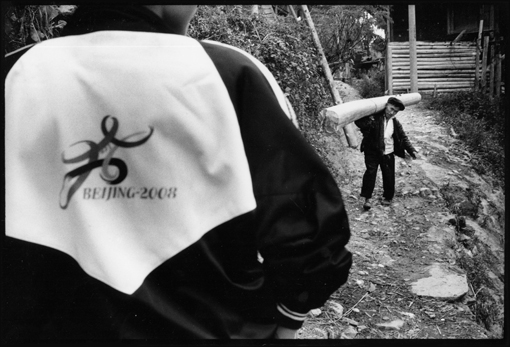
MiC-031
Carpenter with Tree
"Dong" carpenter carrying a tree trunk to be used for building a house. South East Guizhou Province.
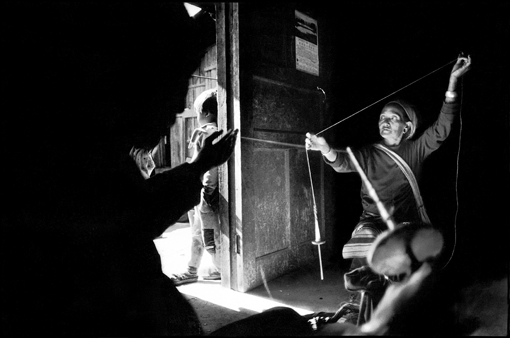
MiC-032
Hemp Thread
Wa women prepare hemp thread. Yunnan province.
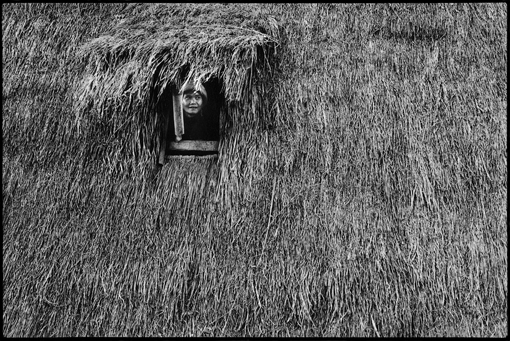
MiC-033
Thatched Roof
Thatched roof in a Wa village. Yunnan Province.
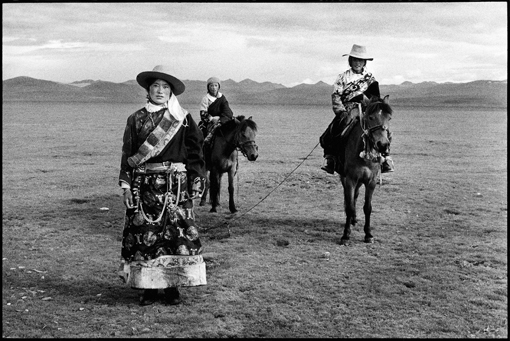
MiC-034
Kampa Girls
Kampa girls in their best on their way to a horse festival. Central Qinghai.
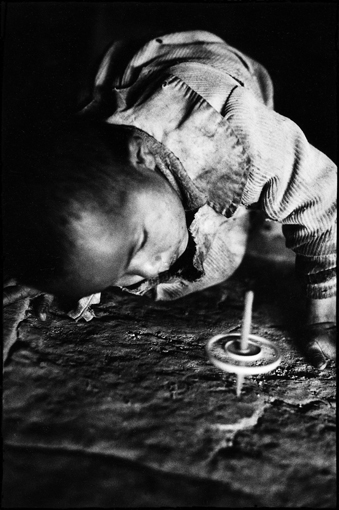
MiC-035
Jinuo Boy
Jinuo boy. The Jinuo are one of the smallest of the 56 “Minority Nationalities” officially recognized in PR of China. The total population of the Jinuo is a little over 15000 and they were largely slash and burn semi- nomadic farmers until the 1950ies and 1960ies. Xishuangbanna Region, Yunnan Province.
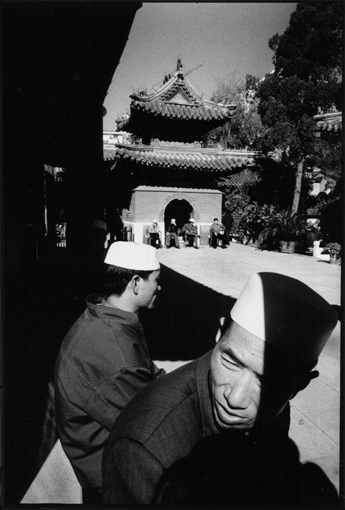
MiC-036
Beijing Mosque
Huei Muslims in the courtyard of Beijing's main mosque.
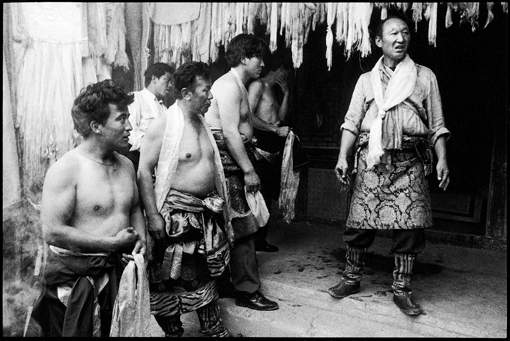
MiC-037
“Mountain Spirit"
The “Mountain Spirit” possesses the body of a village elder in trance. The Mountain Spirit (a mythical figure from the ancient Ba culture) is the guest of honour in an Amdo harvest festival. Gansu Province.
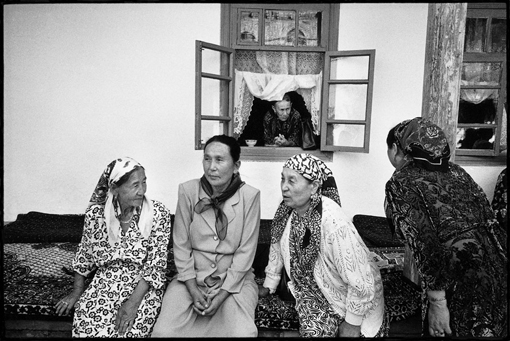
MiC-038
Uighur Marriage Party
Women at a Uighur marriage party held at the bride’s home. Yining, Xinjiang
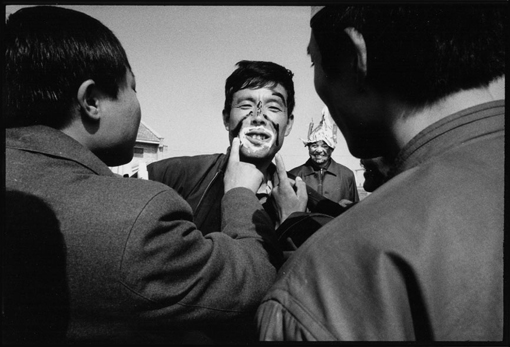
MiC-039
Huei Marriage
Preparing for games during a Huei marriage in Central Nigxia Province.
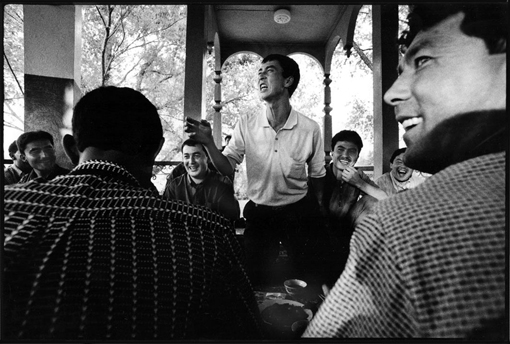
MiC-040
Uighr "Stag Night"
Many jokes are told during "Stag Night" celebrations for a Uighr groom. Yining, Xinjiang.
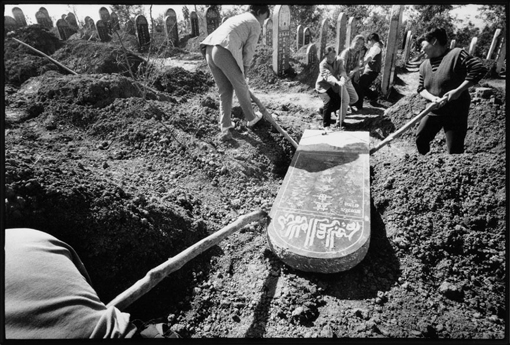
MiC-041
Huei Cemetary
Han Chinese working at the Huei cemetery outside Xi'an.
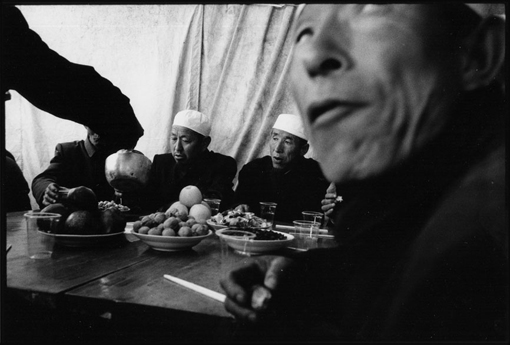
MiC-042
Huei Marriage Feast
Elders at a Huei marriage feast in Central Ningxia Province.
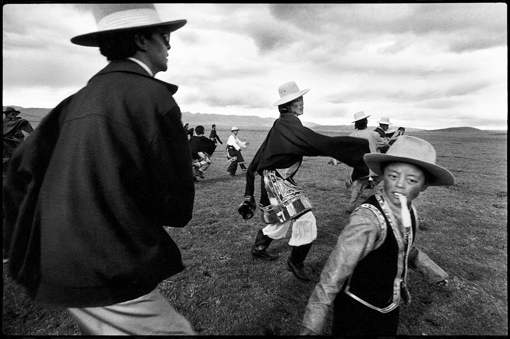
MiC-043
Kampa Dance
Kampa dance on the plains of Central Qinghai at an altitude of 4500m above sea level.
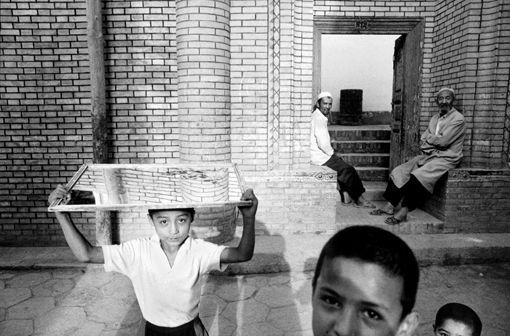
MiC-044
Backstreet Mosque
Outside a Mosque in the backstreets of Kashgar, Xinjiang.
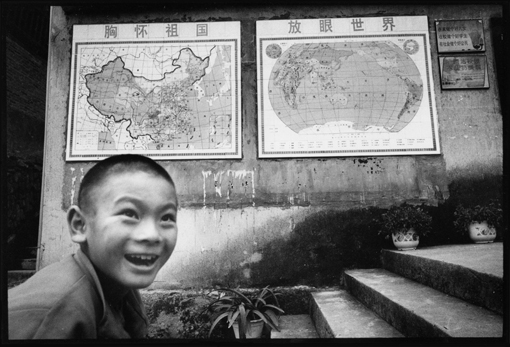
MiC-045
Dong village Middle School
Middle School in a Dong village. The map shows "the Motherland" and the world from a Chinese perspective.
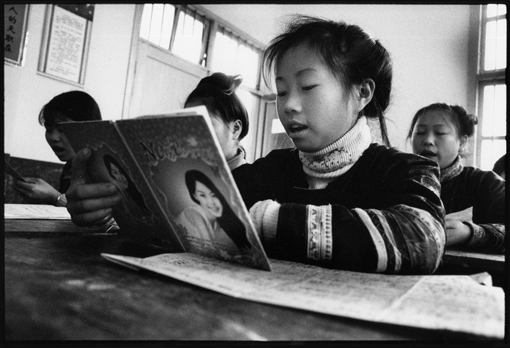
MiC-046
Miao girl in Middle School
Miao girl in a Middle School. Even in Minority areas almost all lessons are in Mandarin.
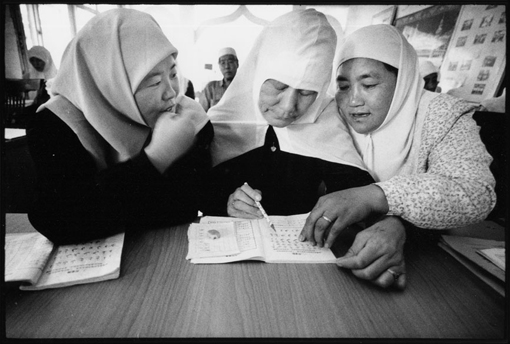
MiC-047
Koranic school
Koranic school for adults, Ningxia province.
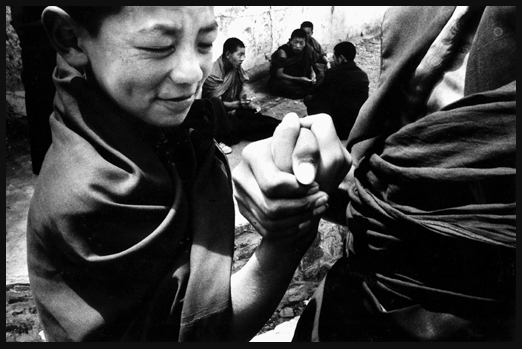
MiC-048
Young Tibetan Monks
Young Tibetans wanting to attend Buddhist Monasteries must first pass exams on their patriotic allegiance to the "Motherland". Xiahe, Gansu.
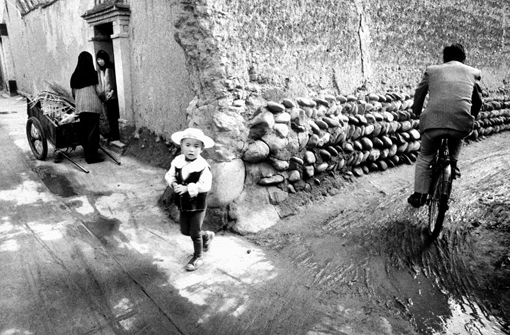
MiC-049
Huei Village
Scene In a Huei village in Central Gansu Province
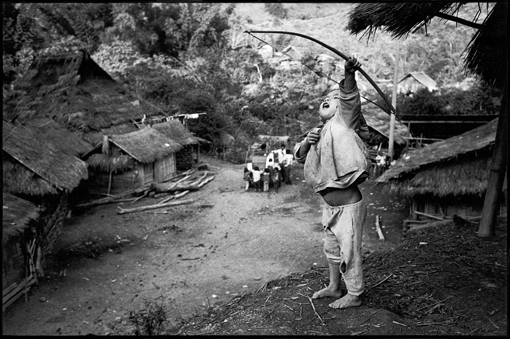
MiC-050
Jinuo Village
Scene in a Jinuo village. Xishuangbana, Yunnan
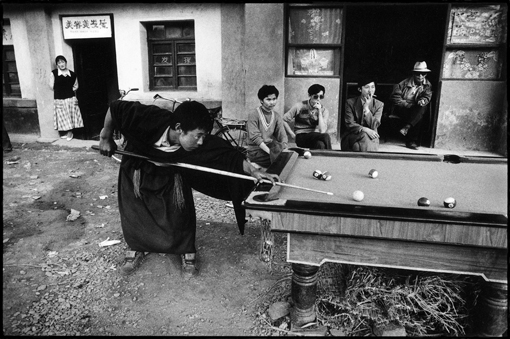
MiC-051
Monk playing pool
Young Tibetan monk plays pool in Dare, central Qinghai. Many political and common prisoners were sent to this area for internal exile.
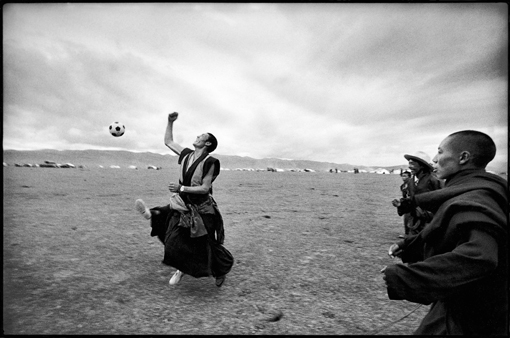
MiC-052
Monks playing football
Tibetan monks playing football on the central plains of Qinghai, 3800m above sea level. Eastern Tibet.
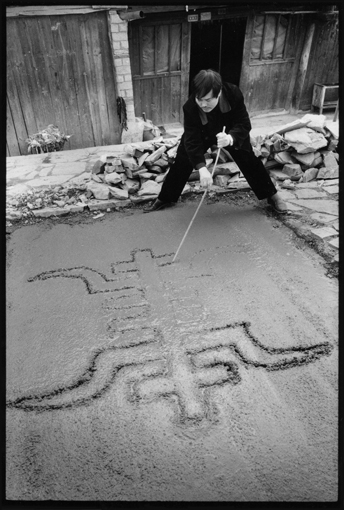
MiC-053
Miao National Minority symbol
Writing the Miao National Minority symbol in cement in preparation for the arrival of the tourist industry.
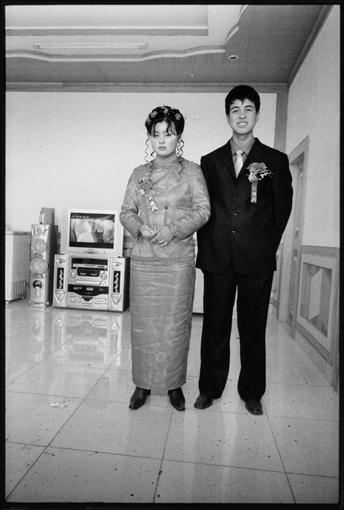
MiC-054
Huei Newly Weds
Young Huei newly weds in their new home with all the mod cons, apart from running water. Central Ningxia.
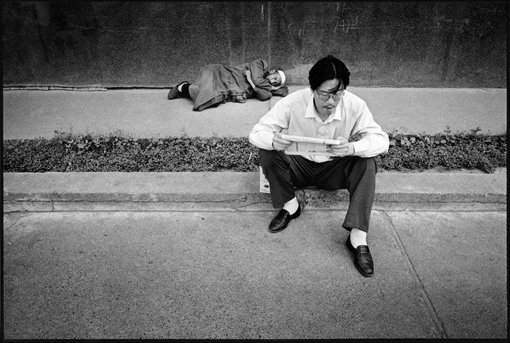
MiC-055
Han Settler
A Han settler reads ads in the local paper while a Uigher man takes a nap in central Urumqi, Xingjiang. The city's population is now largely Han.
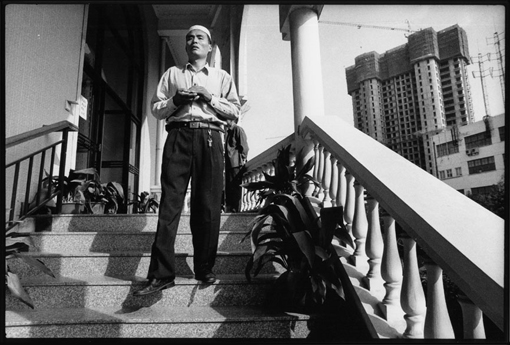
MiC-056
Mosque in Shanghai
Newly built Muslim Mosque in Shanghai. Many people from Minority cultures are moving to China's big cities.
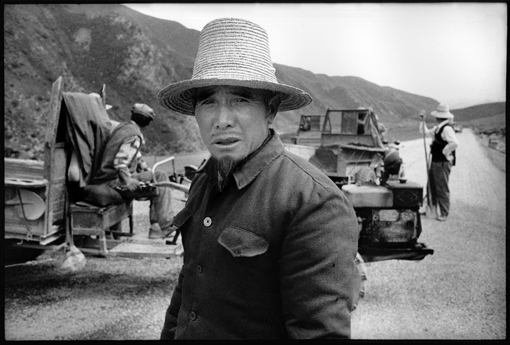
MiC-057
Huei Labourer, Gansu
Huei labourer on new roadwork through Gansu, eastern Tibet.
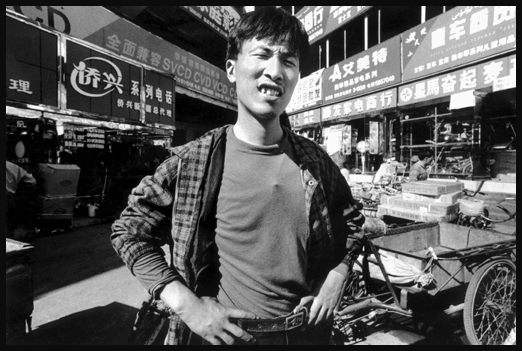
MiC-058
Uigher Porter
Uigher porter in Urumqi central market, which has been almost totally taken over by Han Chinese traders. Xingjiang.
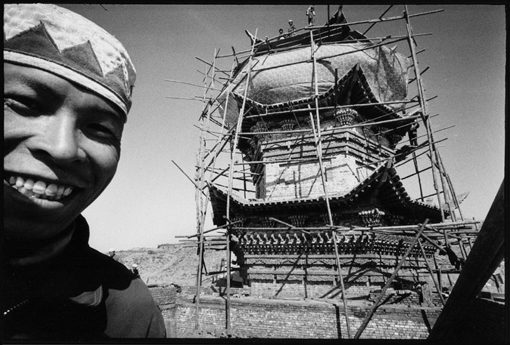
MiC-059
New Mosque, Ningxia
Huei youth working on the building site of a new Mosque, central Ningxia.
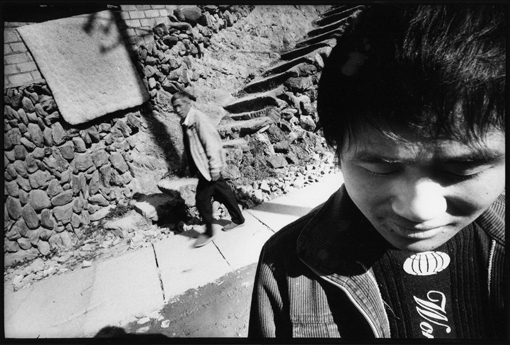
MiC-060
Miao Youth
Miao youth returns home to his village from the city for New Year celebrations.
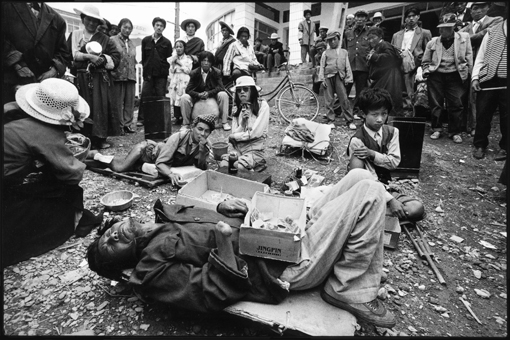
MiC-061
Disabled Street Performers
A group of disabled street performers in Yushu, Southern Qinghai. The group were Han Chinese (the ethnic majority) from Sichuan Province and had travelled several hundred kilometers because they said they earn more when performing for Tibetans then at home.
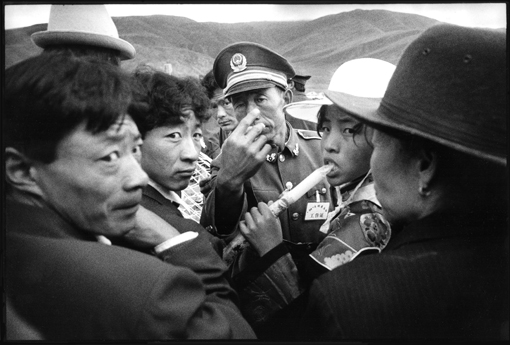
MiC-062
Tibetan Police
Tibetan police call the photographer for questioning. Central Qinghai
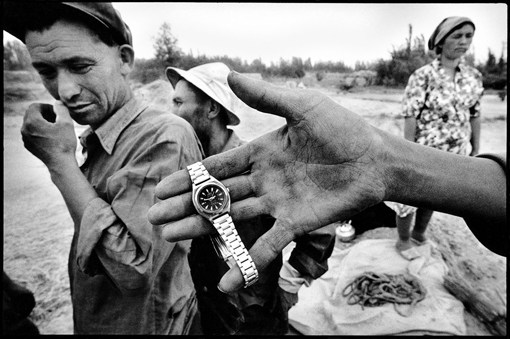
MiC-063
Uighur Watch
Uighur farmer displays his watch. The Uighur population still keep local time (two hours behind the national standard) for practical reasons and as a demonstration of defiance towards the central government in Beijing. The authorities insist on using “Beijing Time” for public office hours and trains despite it being totally impractical. Kelpin, Xinjiang.
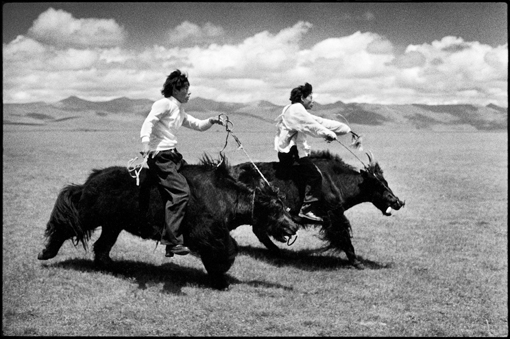
MiC-064
Yak Race
Yak race in Central Qinghai, Eastern Tibet.
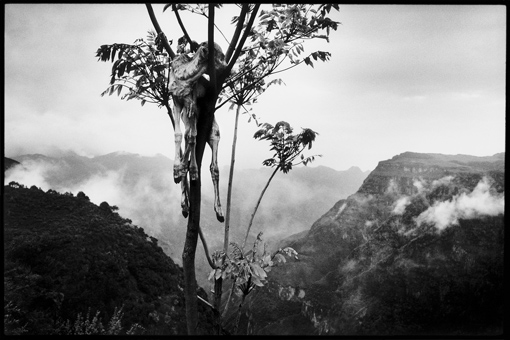
MiC-065
Yi Calf Sacrifice
A sacrificed calf is left as an offering to the spirits in the hope that they will, in turn, protect the harvest of a small Yi community in South West Sichuan.